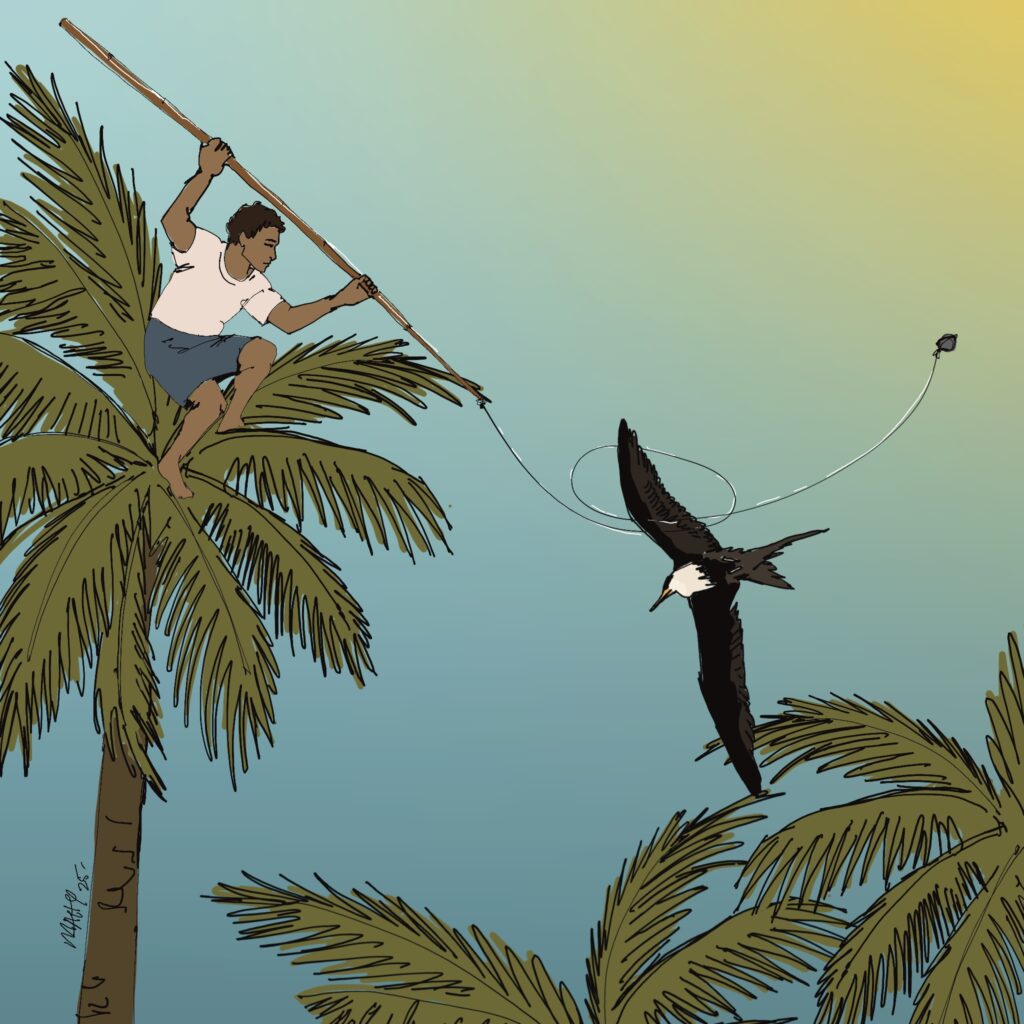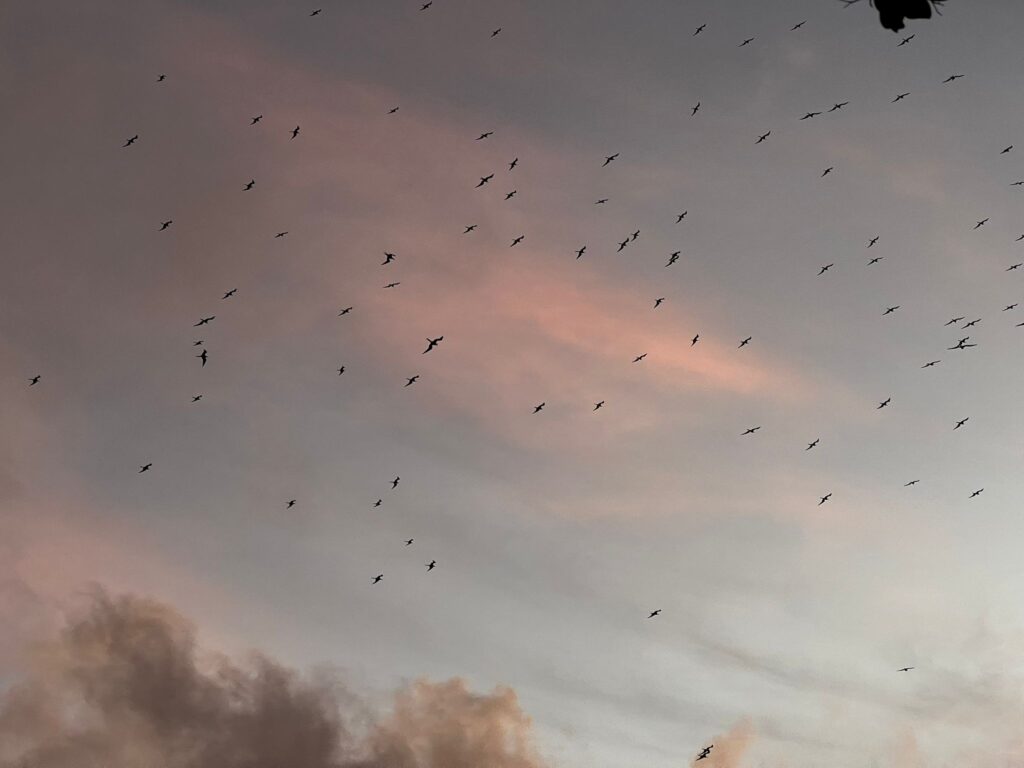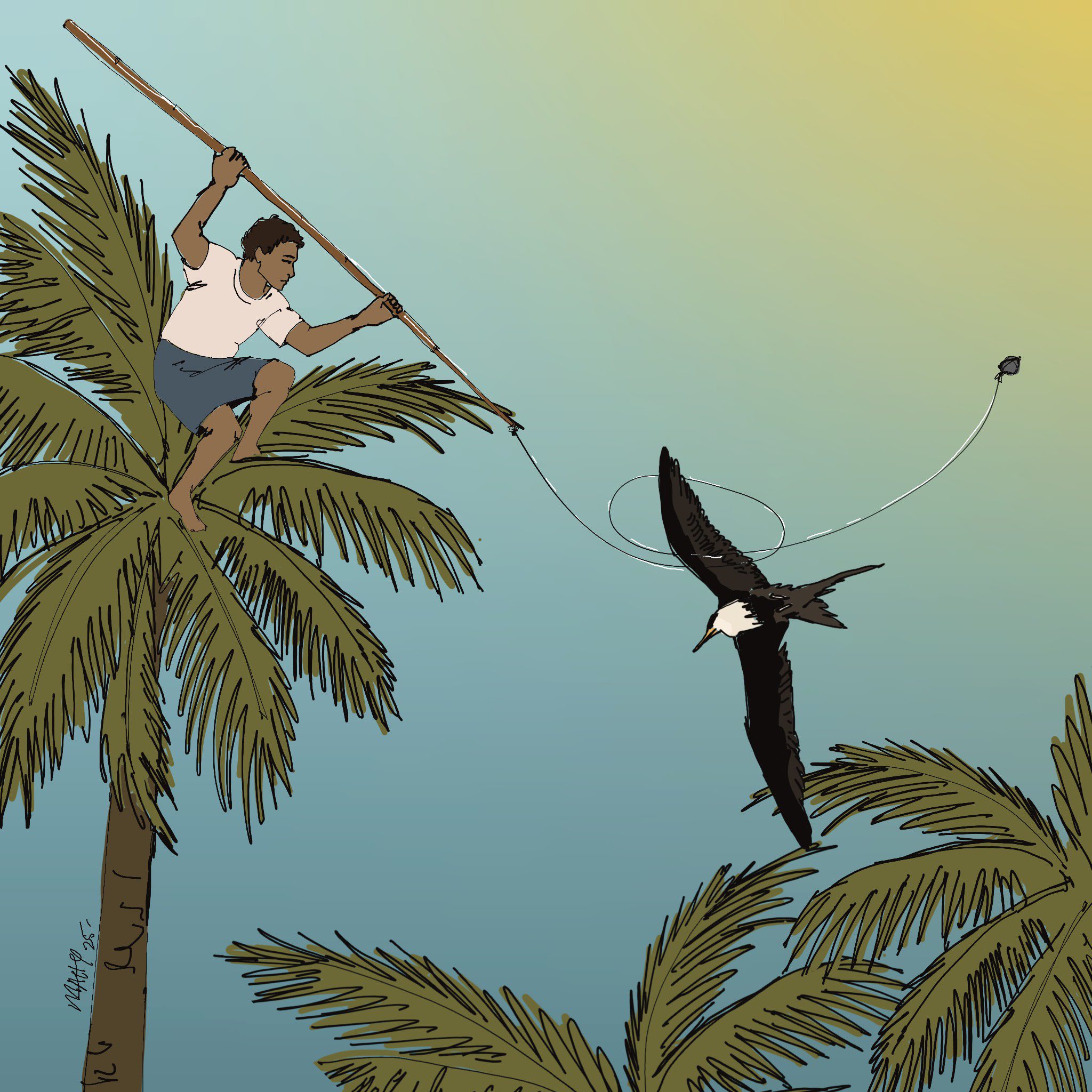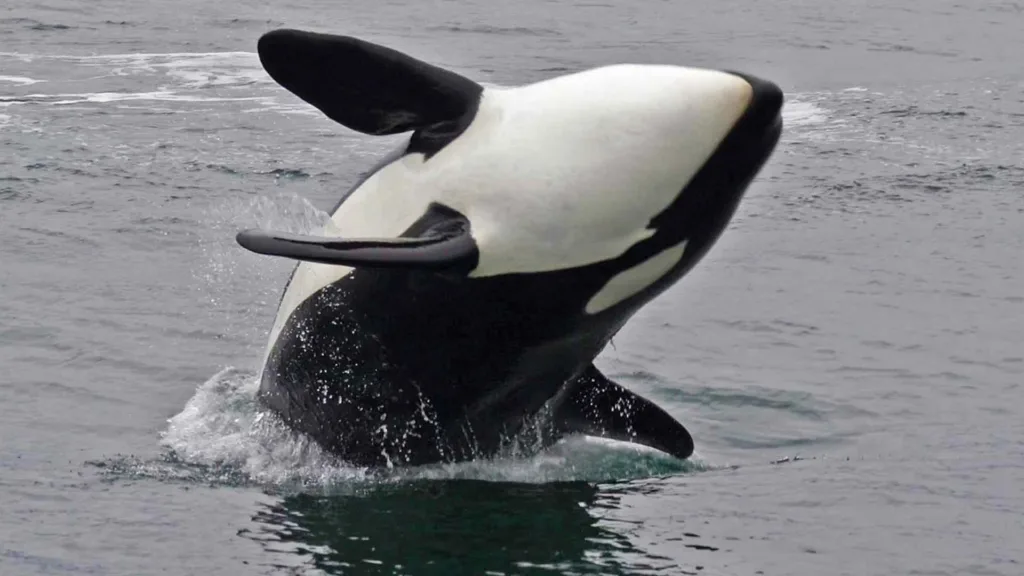
The monsoon season—for Fuvahmulah—attracts thousands of frigate birds, or locally known as huraa. These birds have long wings, a streamlined shape, and low weight, which gives them outstanding maneuverability in the air. When the season meets the magnificent atmospheres of the enigmatic island, flocks of frigate birds soar miles above the ground.
The predators silently glide in the air, waiting for the prey. They soar endlessly through the bright sky, only to plummet to the ground like a stone upon spotting a fish near the surface.
When flying fish (locally known as hulhanmaha) leap out of water, the frigate birds take advantage from the air by descending quickly to catch the flying fish.
In the mid-1980s, I recall skillful men catching frigate birds on our island. The flesh of the bird was favored by the inhabitants of our island. This bird meat was used to make meals. Capturing frigate birds on our island came to a halt before the bird protection law went into effect.
The story is about how they caught the frigate birds. It required sheer expertise. We observed that some men have exceptional competence, managing to catch 10–20 birds in a single day.
People who catch frigate birds carry long bamboo poles and climb up some palm trees that are exclusively used for this purpose. The pole has a string, similar to a fishing line, attached at the top of the pole. The powerful string is around three times the length of the pole. At the end of the string is a lead weight, locally known as bari.

The expert men conceal among the top leaves of the coconut palm. They wait patiently until a frigate bird approaches their concealed spot at the top of the palm tree.
They hid among the upper leaves, holding a long bamboo stick vertically. When a bird enters the experts’ airborne zone, the pole is thrown through the air, causing the lead weight to spin around the bird’s wings and capturing the frigate bird with the specialized line.
The men will secure a string around the bird’s wings. The skillful men pick up the birds, tie them up, and then drop them on the ground. The birds are typically collected by someone on the ground.





